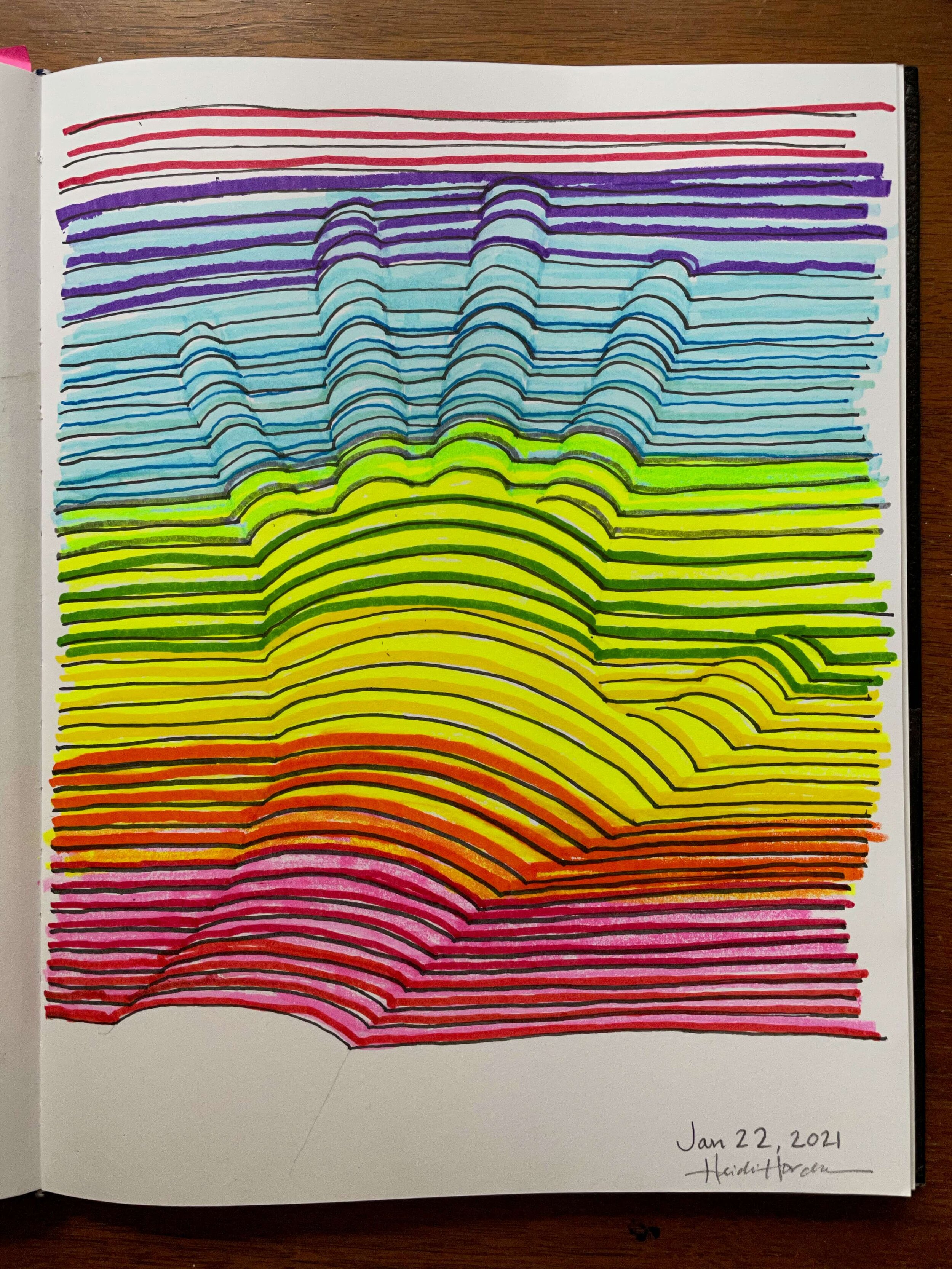Beginner Friendly Art Lesson: Op-Art Hands
ART LESSON POST!
I’ve been teaching art enrichment for my friend Nicole’s 6th grade class in Los Angeles. She has been teaching her class online during the pandemic and asked if I would pitch in with their art lessons. Not only has it been great to have an excuse to chat regularly with my friend, but I’ve been enjoying the time spent with the students as well. Our time is short, so the lessons are beginner-friendly, and to the point!
(video demo below)
The lesson is called Op Art.
Op art is short for “optical art,” or art that creates an illusion. If you Google the term you will find lots of mostly black and white images that create a trick of the eye resulting in an illusion of movement or dimension.
Before starting it’s important to know the difference between positive space and negative space. If you think of a doughnut (below), the Doughnut or object is considered “positive space”. The area around the doughnut, and the area inside the doughnut hole is called “negative space” because it is empty.
Positive Space vs. Negative Space
When you trace your object onto the paper (your hand), it will be the “positive space,” and the rest of the page is “negative space.”
Trace your hand or draw an object. In my demo I used a straight column and a wavy column (3rd slide).
Use a black marker to draw horizontal lines across the page. STRAIGHT lines in the negative space; CURVED lines in the positive space. You can erase the pencil lines at this stage if you wish.
Use different colored markers to draw lines in between the black lines. I used a red > orange > yellow > green > blue > violet gradient.
Then fill in the remaining white areas with coordinating highlighter.
It’s a good practice to always sign and date your work. Even if it’s in my sketchbook and my name is on my sketchbook I usually at least include a date so I know when I made the artwork. It’s very helpful when you’re looking back at your old sketchbooks to know what year you made that piece & what you were doing at the time.

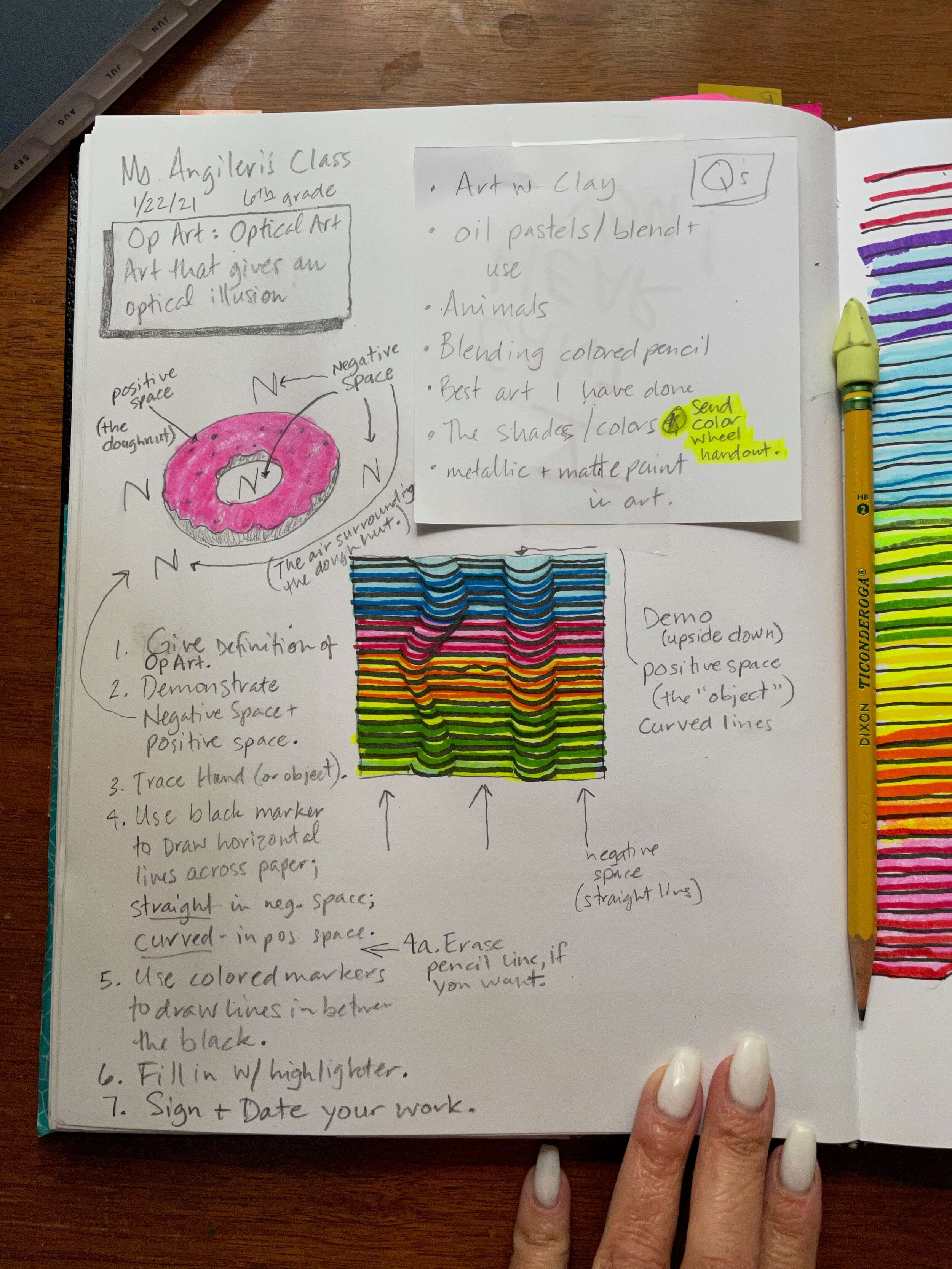
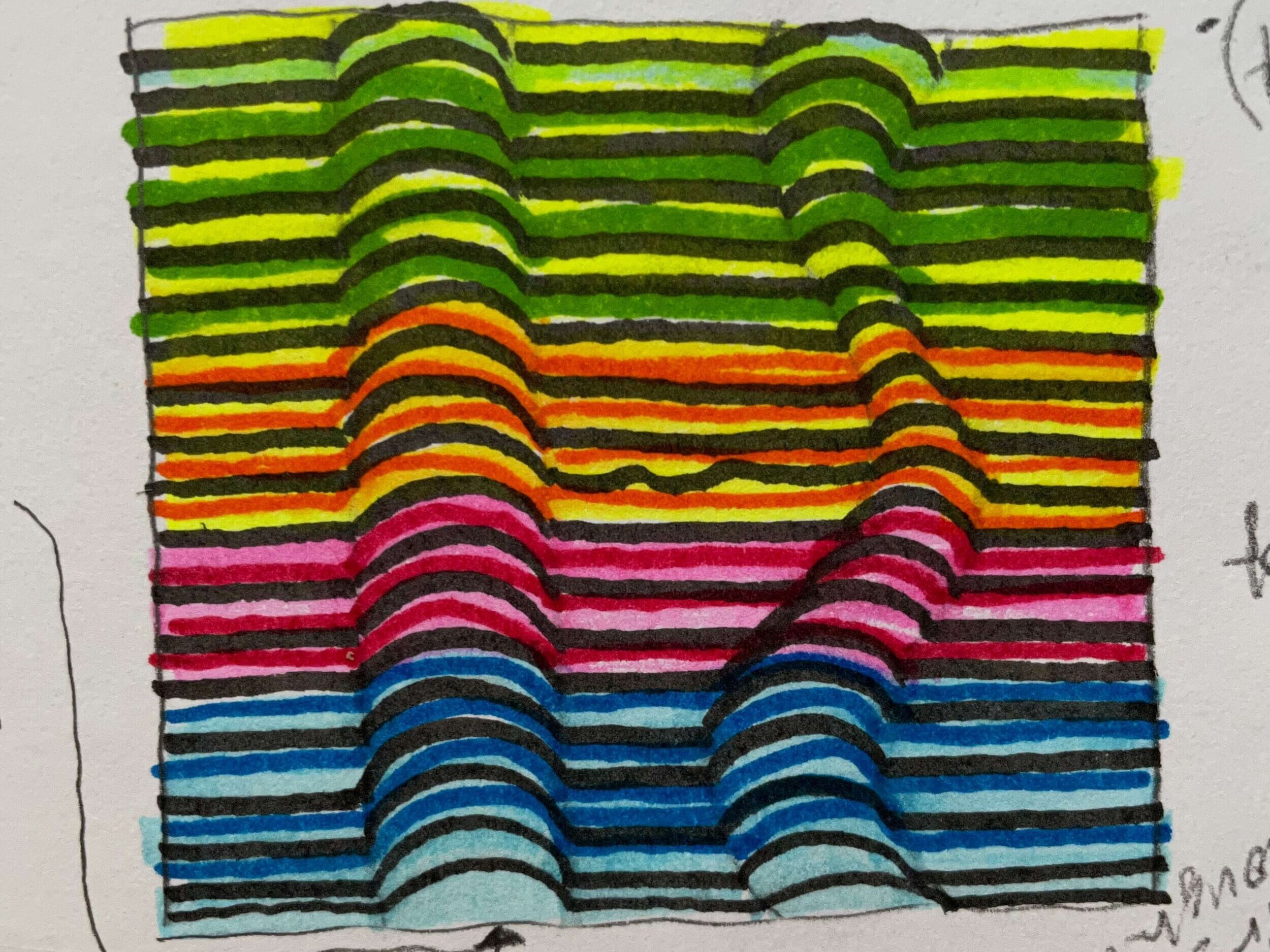
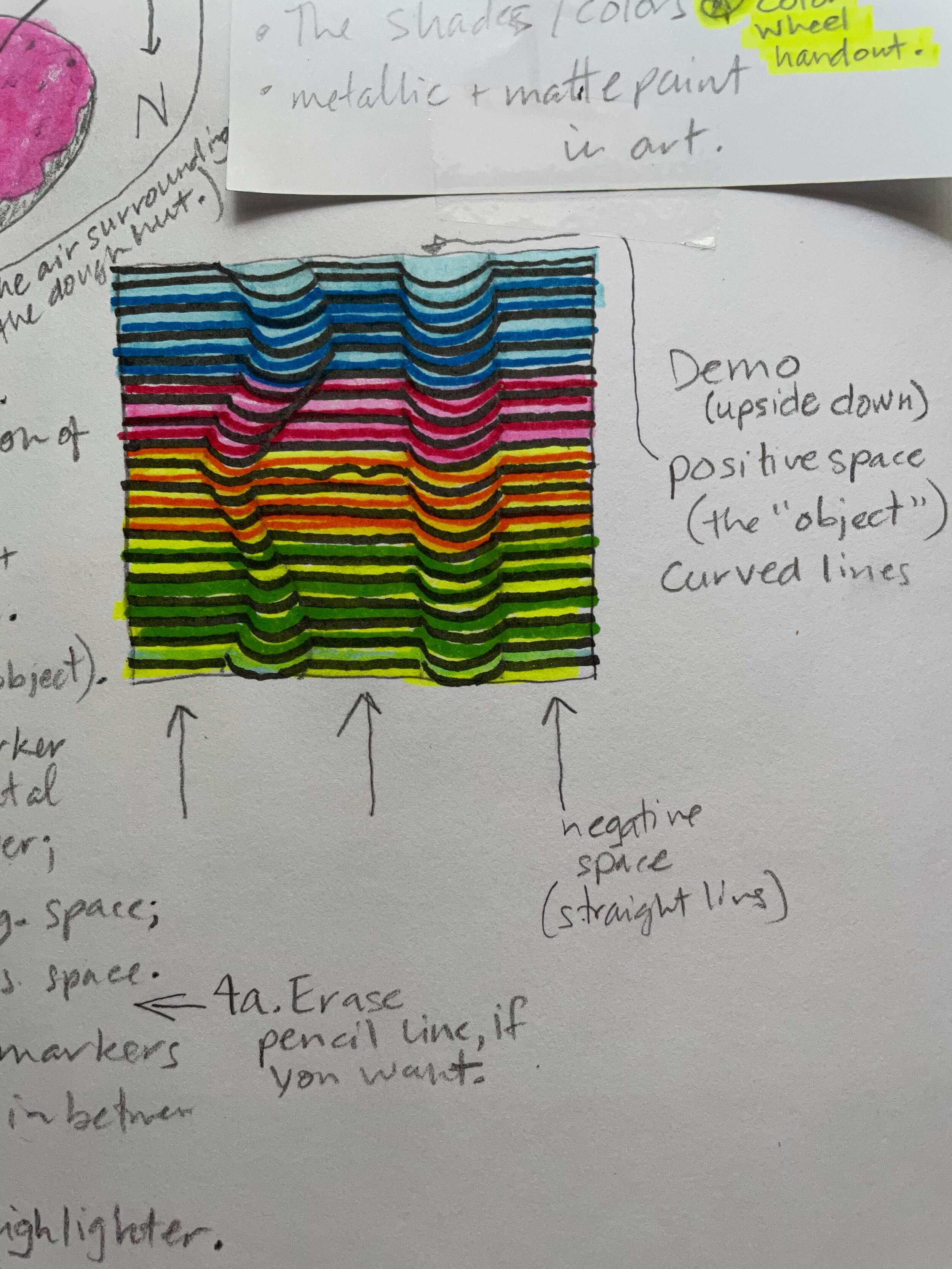
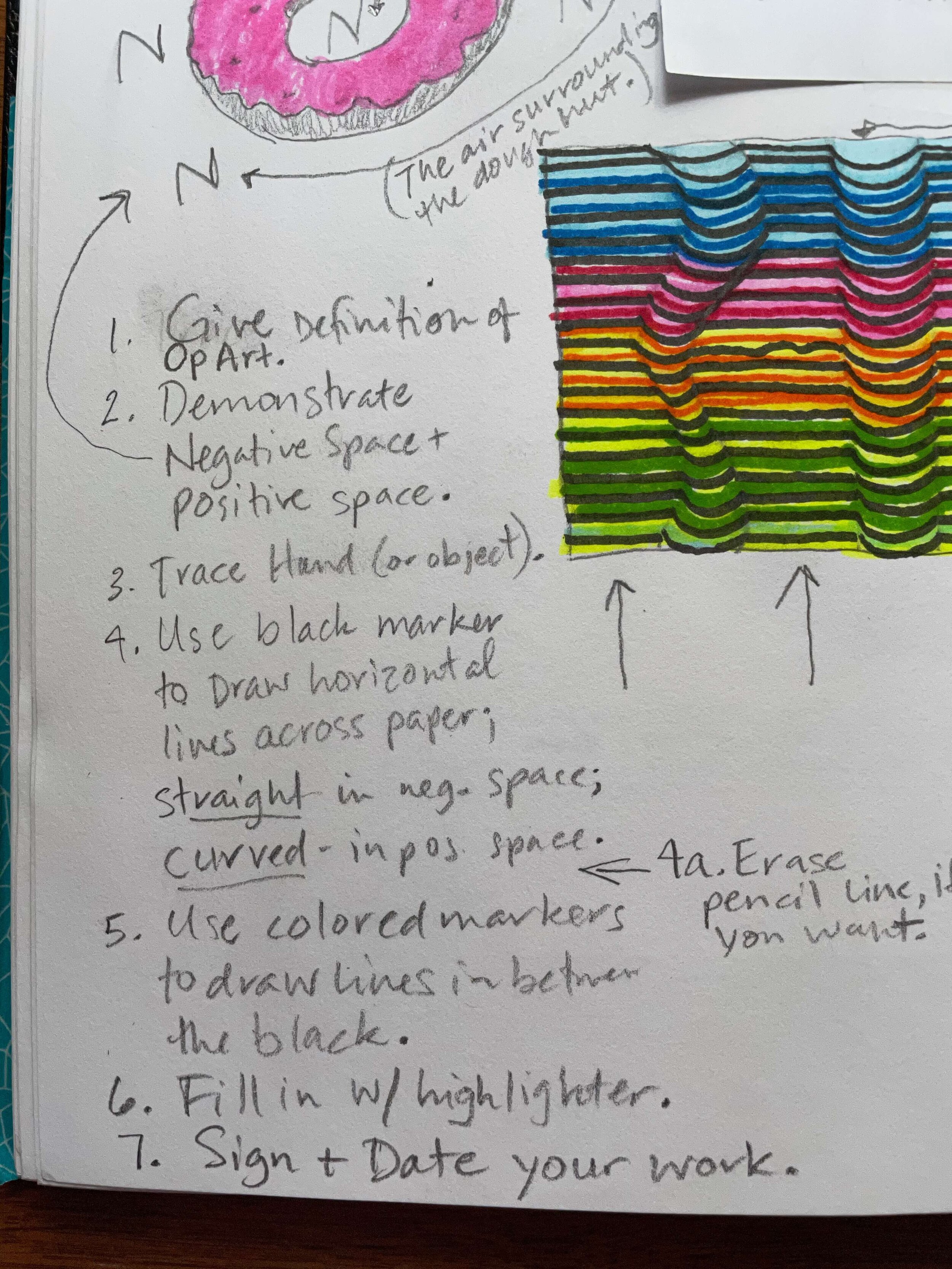


Click below for video demo!

